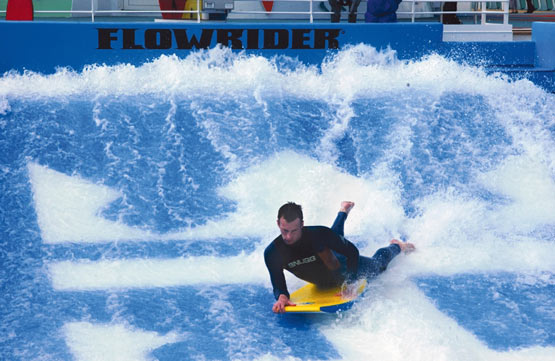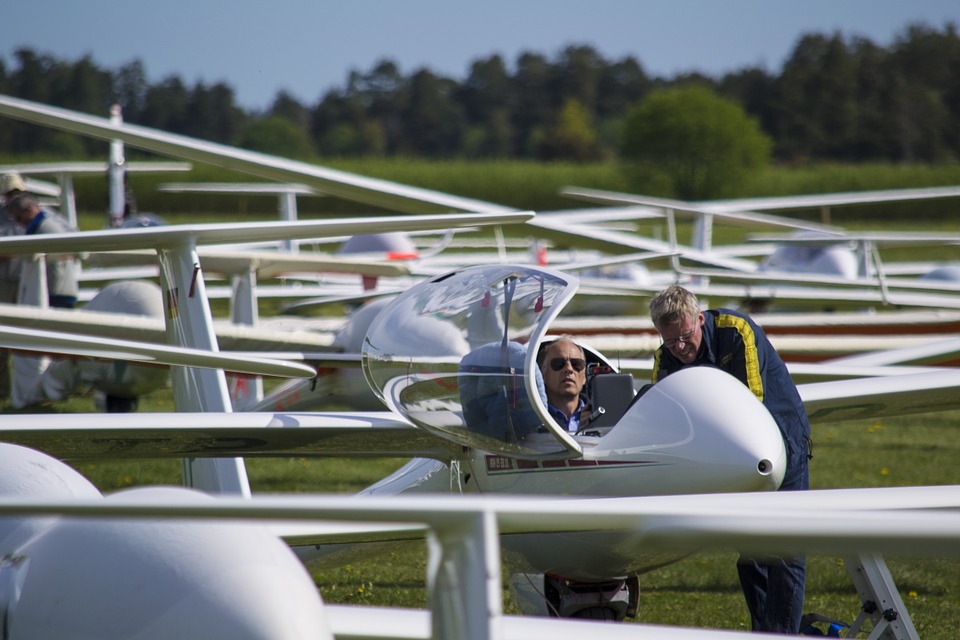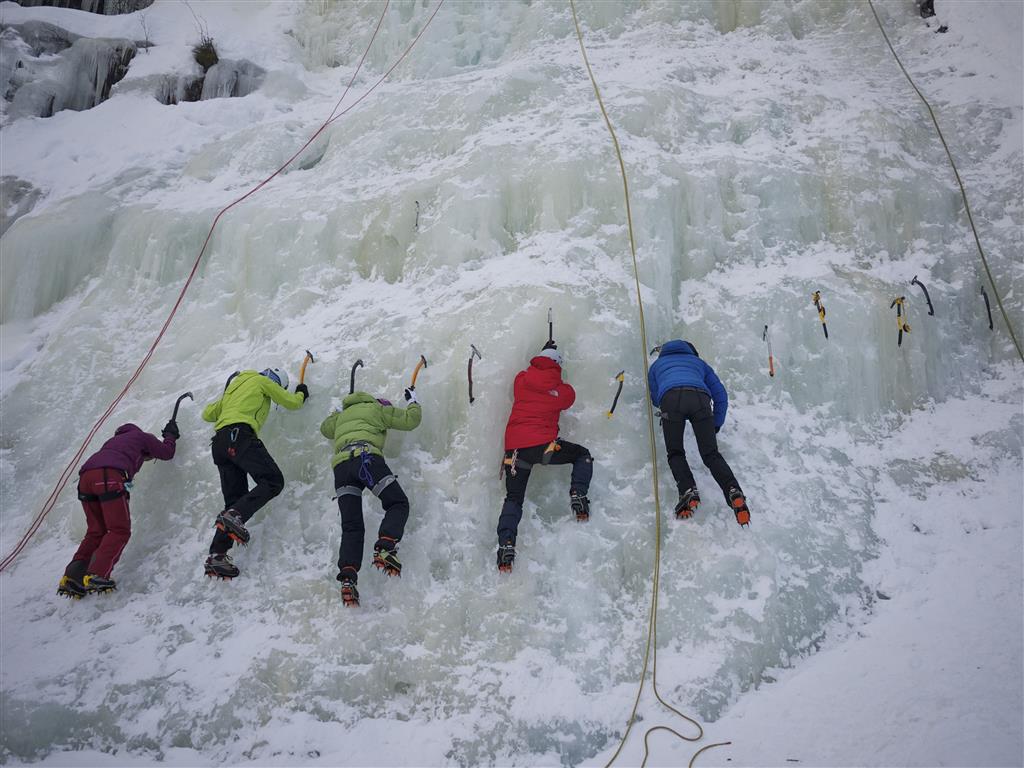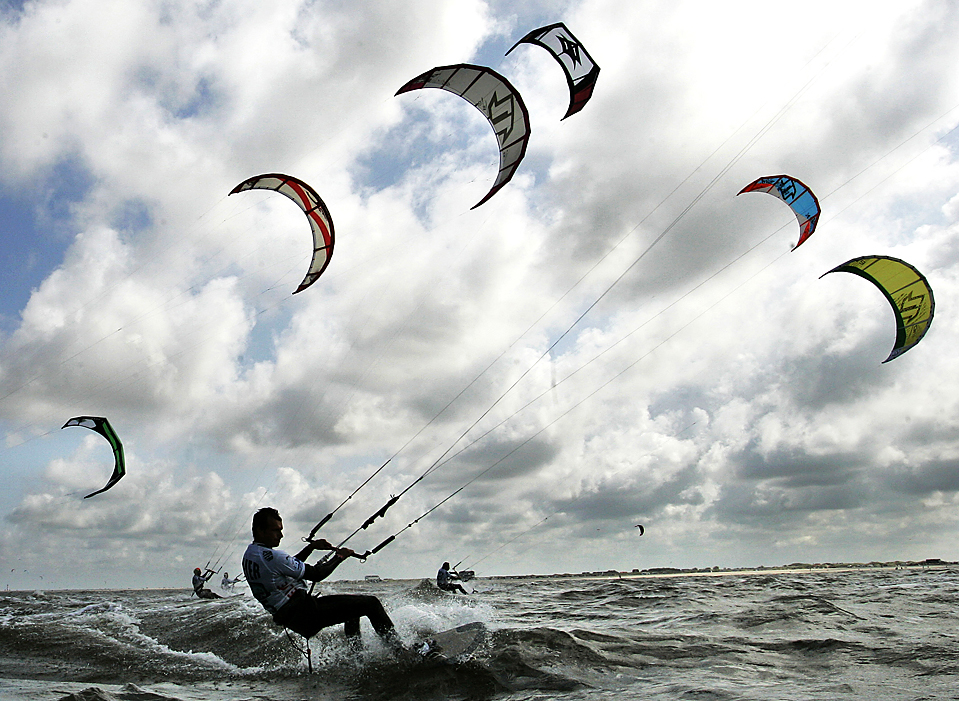| 1 | Skiing | Skiing is a specific type of skiing, which involves tricks, jumps, and terrain park features, such as rails, boxes, jibs, or other obstacles. This form of skiing resulted from a combination of the growth in popularity of snowboarding as well as the progression of Freestyle skiing. "Newschoolers", or those who specifically ski in this style, as opposed to traditional freestylers, freeriders, big mountain skiers, and racers, are often found in terrain parks, which are designed specifically for tricks. |  |  |  | |
| 2 | Hot Air Ballooning | Hot air ballooning is the activity of flying hot air balloons. Attractive aspects of ballooning include the exceptional quiet (except when the propane burners are firing), the lack of a feeling of movement, and the bird's-eye view. Since the balloon moves with the direction of the winds, the passengers feel absolutely no wind, except for brief periods during the flight when the balloon climbs or descends into air currents of different direction or speed. |  |  |  | |
| 3 | Bicycling | Cycle sport is competitive physical activity using bicycles. There are several categories of bicycle racing including road bicycle racing, time trialling, cyclo-cross, mountain bike racing, track cycling, BMX, and cycle speedway. Non-racing cycling sports include artistic cycling, cycle polo, freestyle BMX and mountain bike trials. The Union Cycliste Internationale (UCI) is the world governing body for cycling and international competitive cycling events. The International Human Powered Vehicle Association is the governing body for human-powered vehicles that imposes far fewer restrictions on their design than does the UCI. The UltraMarathon Cycling Association is the governing body for many ultra-distance cycling races |  |  |  | |
| 4 | Bodyboarding | Bodyboarding is a water sport in which the surfer rides a bodyboard on the crest, face, and curl of a wave which is carrying the surfer towards the shore. Bodyboarding is also referred to as Boogieboarding due to the invention of the "Boogie Board" by Tom Morey. The average bodyboarding consists of a short, rectangular piece of hydrodynamic foam. Bodyboarders typically use swim fins for additional propulsion and control while riding a breaking wave. |  |  | | |
| 5 | Bossaball | Bossaball is a team sport that originated in Spain and was conceptualized by Belgian Filip Eyckmans in 2004 . It is similar to volleyball, but also includes elements of football (soccer), gymnastics and capoeira. The inflatable court with integrated trampolines on each side of the net, allowing players to bounce high enough to spike the ball, adds great spectacularity. |  |  | | |
| 6 | Bouldering | Bouldering is a form of rock climbing that is performed without the use of ropes or harnesses. While it can be done without any equipment whatsoever, most climbers use climbing shoes to help secure footholds, chalk to keep their hands dry, and bouldering mats to prevent injuries from falls. Unlike free solo climbing, which is also performed without ropes, bouldering problems (the path that a climber takes in order to complete the climb) are usually less than 6 meters (20 ft.) tall. Artificial climbing walls allow boulderers to train indoors in areas without natural boulders. Bouldering competitions, which employ a variety of formats, take place in both indoor and outdoor settings. |  |  | | |
| 7 | Bungee Jumping | Bungee jumping involves jumping off a tall structure such as a building or a bridge, with an elastic cord attached around your ankles. There are a range of heights available to jump around the world, and you can also bungee jump out of helicopters or a hot air balloons. |  |  |  | |
| 8 | Canoeing & Kayaking | Canoeing and Kayaking is a popular water sport pastime around the world. Canoeing – recreational boating activity or paddle sport in which you kneel or sit facing forward in an open or closed-decked canoe, and propel yourself with a single-bladed paddle, under your own power.
Kayaking – use of a kayak for moving across water. It is distinguished from canoeing by the sitting position of the paddler and the number of blades on the paddle. A kayak is a boat where the paddler faces forward, legs in front, using a double-bladed paddle. Most kayaks have closed decks. |  |  |  | |
| 9 | Canyoning | Canyoning is travelling in canyons using a variety of techniques that may include other outdoor activities such as walking, scrambling, climbing, jumping, abseiling (rappelling), and swimming. Although hiking down a canyon that is non-technical, (canyon hiking) is often referred to as canyoneering, the terms canyoning and canyoneering are more often associated with technical descents those that require abseils (rappels) and ropework, technical climbing or down-climbing, technical jumps, and technical swims. Canyoning is frequently done in remote and rugged settings and often requires navigational, route-finding and other wilderness travel skills. |  |  | | |
| 10 | Caving | Caving is the exploration of fascinating underground caves. Some caves are tourist attractions, so if you want adventure, join a caving club and go off the beaten track with the experts. To take caving extreme, you can also combine caving with sea diving, base jumping, abseiling or ice climbing. |  |  | | |
| 11 | Mountain Biking | Mountain biking is the sport of riding bicycles off-road, often over rough terrain, using specially designed mountain bikes. Mountain bikes share similarities with other bikes, but incorporate features designed to enhance durability and performance in rough terrain. Mountain biking can generally be broken down into multiple categories: cross country, trail riding, all mountain, downhill, freeride and dirt jumping. However, the majority of mountain biking falls into the categories of Trail and Cross Country riding styles. |  |  | | |
| 12 | BMX | BMX, an abbreviation for bicycle motocross, is a cycle sport performed on BMX bikes, either in competitive BMX racing or freestyle BMX, or else in general on- or off-road recreation. BMX began when young cyclists appropriated motocross tracks for fun, racing and stunts, eventually evolving specialized BMX bikes and competitions. |  |  | | |
| 13 | Dogsled Racing | Dogsled racing, also called sled dog racing, Redstone Classic sport of racing sleds pulled by dogs, usually over snow-covered cross-country courses. In warmer climates, wheeled carts are substituted for the sleds. Dogsledding was developed from a principal Eskimo method of transportation. The gold rushes in Alaska and the Yukon Territory (now Yukon) at the turn of the 20th century brought greater global attention to sled dogs, which were used at that time for freight hauling and mail delivery, as well as by fur trappers to travel between their traps. At first dogs were individually tethered to the sled in a fan hitch. |  |  | | |
| 14 | Extreme Ironing | Extreme ironing is an extreme sport and a performance art in which people take ironing boards to remote locations and iron items of clothing. According to the Extreme Ironing Bureau, extreme ironing is the latest danger sport that combines the thrills of an extreme outdoor activity with the satisfaction of a well pressed shirt.Part of the attraction and interest the media has shown towards extreme ironing seems to center on the issue of whether it is really a sport or not. It is widely considered to be tongue in cheek. |  |  |  | |
| 15 | Auto Racing | Auto racing is a sport involving the racing of automobiles for competition. The main aim of an individual event is to set the fastest time in a set number of laps or time limit. The finishing order is determined by race time, with the fastest time in first place, second fastest in second place and so on. Any driver failing to complete a race for any reason is deemed "retired", or, more commonly, "out". Retired drivers will have their positions determined by the order in which they retired, with the first to retire finishing last, the next second-last and so on. In most events, a driver's final race position may be classified if he/she completes a certain amount of the race distance, usually just short of completing the full race. There are numerous different categories of auto racing, each with different rules and regulations, such as compulsory pit stops and car regulations, for all cars and drivers to comply. |  |  | | |
| 16 | Underwater Hockey | Underwater Hockey (UWH), (also called Octopush (mainly in the United Kingdom)) is a globally played limited-contact sport in which two teams compete to manoeuvre a puck across the bottom of a swimming pool into the opposing team's goal by propelling it with a pusher. It originated in England in 1954 when Alan Blake, the founder of the newly formed Southsea Sub-Aqua Club, invented the game he called Octopush as a means of keeping the club's members interested and active over the cold winter months when open-water diving lost its appeal.Underwater Hockey is now played worldwide, with the Confédération Mondiale des Activités Subaquatiques, abbreviated CMAS, as the world governing body.The first Underwater Hockey World Championship was held in Canada in 1980 after a false start in 1979 brought about by international politics and apartheid. |  |  | | |
| 17 | Truck Racing | Truck racing is a form of motor racing which involves modified versions of heavy tractor units on racing circuits.Maximum race speed is restricted to 160 km/h (100 mph) for safety reasons, and a minimum weight limit is 5500 kg. Races start from a rolling start, and commonly races last from 8 to 12 laps. Although a non contact sport, due to the physical size, and closeness of trucks to one another during races, minor collisions can often occur. However, injuries to drivers are very rare.Unlike other forms of motor sport, race trucks look like their road-going counterparts and conform to regulations to ensure that major components used are the same.All drivers must hold a race licence issued by the Motor Sports Association, or the national motorsport body from the driver's country |  |  | | |
| 18 | BASE jumping | BASE jumping, also sometimes written as B.A.S.E. jumping, is parachuting or wingsuit flying from a fixed structure or cliff. "BASE" is an acronym that stands for four categories of fixed objects from which one can jump: building, antenna, span, and Earth.Due to the lower altitudes of the jumps, BASE jumping is significantly more dangerous than skydiving from a plane. In the U.S., BASE jumping is currently regarded by many as a fringe extreme sport or stunt.In some jurisdictions or locations, BASE jumping is prohibited or illegal; in some places, however, it is permitted, like Perrine Bridge, in Twin Falls. BASE jumping became known to the wider public by depictions of BASE jumping in a number of action movies |  |  |  | |
| 19 | Cave Diving | Cave diving is underwater diving in caves which are at least partially filled with water. The equipment used varies depending on the circumstances, and ranges from breath hold to surface supplied, but almost all cave diving is done using scuba equipment, often in specialised configurations. Cave diving is generally considered to be a type of technical diving due to the lack of a free surface during large parts of the dive, and often involves decompression. |  |  | | |
| 20 | Formula One | Formula One is the highest class of single seat auto racing that is sanctioned by the Fédération Internationale de l'Automobile (FIA). The FIA Formula One World Championship has been the premier form of racing since the inaugural season in 1950, although other Formula One races were regularly held until 1983. The "formula", designated in the name, refers to a set of rules, to which all participants' cars must conform. The F1 season consists of a series of races, known as Grands Prix (from French, originally meaning great prizes), held throughout the world on purpose-built F1 circuits and public roads. |  |  | | |
| 21 | Freediving | Freediving, free diving is a form of underwater diving that relies on divers' ability to hold their breath until resurfacing rather than on the use of a breathing apparatus such as scuba gear. Recognised examples of freediving activities include traditional fishing techniques, competitive and non-competitive freediving, competitive and non-competitive spearfishing and freediving photography, synchronized swimming, underwater football, underwater rugby, underwater hockey, underwater hunting other than spearfishing, underwater target shooting and snorkeling. The term 'freediving' is often associated with competitive breath-hold diving or competitive apnea. However, while some regard freediving as a specific group of underwater activities, for others it is merely a synonym for breath-hold diving. The activity that attracts the most public attention is the extreme sport of competitive apnea in which competitors attempt to attain great depths, times, or distances on a single breath. |  |  | | |
| 22 | Freeflying | Freeflying is a skydiving discipline which began in the late 1980s when Olav Zipser began experimenting with non-traditional forms of bodyflight. Zipser founded the FreeFly Clowns as a two-person competitive team with Mike Vail in 1992, and was joined by Omar Alhegelan (1st ever FAI Freestyle World Cup & World Champion), Charles Bryan, and Stefania Martinengo in 1994. The FreeFly Clowns are also credited with opening the first school to teach freeflying, The First School of Modern SkyFlying.Freeflying is an expansion of skydiving which includes the traditional belly-to-earth positions, but extends into vertical flight where the flyer is in an upright position (falling feet first) or in an inverted position (falling head first). These positions increase freefall speeds and make new types of formations and routines possible. |  |  | | |
| 23 | AirSoft Extreme | If you have never heard about Airsoft before, it is something of a cross between paintballing and actually going outside with a real gun and shooting people. Unlike paintball, Airsoft is an outdoor sport, but although it is different it still has its similarities. Of course no real bullets are fired, in actual fact the missiles that are fired from these weapons are shot with less power than a real airgun provides, but that’s not to say that when you are hit it won’t sting! As with paintball, protective equipment it is highly recommended to limit any injury, especially to the eyes and exposed areas of skin. |  |  | | |
| 24 | Flowriding | Flowriders ride on artificial waves that are technically called "sheet waves". Powerful pumps project a three-inch layer of water at speeds ranging from 20 MPH to 30 MPH.The water flows up and over surfaces engineered to replicate the shape of ocean waves. Sheet waves are stationary waves, in that the wave does not move forward, and the movement is derived from water flowing over a stationary surface. Flowriders get their speed from the energy of the water flowing at them, and can perform basic to sophisticated turns and tricks within a relatively small area. |  |  |  | |
| 25 | Gliding | Gliding is a recreational activity and competitive air sport in which pilots fly unpowered aircraft known as gliders or sailplanes using naturally occurring currents of rising air in the atmosphere to remain airborne. The word soaring is also used for the sport. |  |  |  | |
| 26 | Hang Gliding | Hang gliding is an air sport or recreational activity in which a pilot flies a light, non-motorized foot-launch aerospace craft called a hang glider. Most modern hang gliders are made of an aluminium alloy or composite frame covered with synthetic sailcloth to form a wing. The pilot is ensconced in a harness suspended from the airframe, and exercises control by shifting body weight in opposition to a control frame. |  |  | | |
| 27 | Hardcourt Bike Polo | Hardcourt Bike Polo is a variation of traditional Bicycle Polo in which teams of players ride bicycles and use mallets to strike a small ball into a goal. It may also be referred to as "Hardcourt", "Urban Bike Polo" or simply "Bike Polo". |  |  | | |
| 28 | Ice Climbing | Ice climbing is the activity of ascending inclined ice formations. Usually, ice climbing refers to roped and protected climbing of features such as icefalls, frozen waterfalls, and cliffs and rock slabs covered with ice refrozen from flows of water. For the purposes of climbing, ice can be broadly divided into two spheres, alpine ice and water ice. Alpine ice is found in a mountain environment, usually requires an approach to reach, and is often climbed in an attempt to summit a mountain. Water ice is usually found on a cliff or other outcropping beneath water flows. Alpine ice is frozen precipitation whereas water ice is a frozen liquid flow of water. Most alpine ice is generally one component of a longer route and often less technical, having more in common with standard glacier travel, while water ice is selected largely for its technical challenge. Technical grade is, however, independent of ice type and both types of ice vary greatly in consistency according to weather conditions. Ice can be soft, hard, brittle or tough. Mixed climbing is ascent involving both ice climbing and rock climbing |  |  |  | |
| 29 | Ice Canoeing | Originally a means of winter transport between the islands and shores of the Saint Lawrence River, ice canoeing is now a sport. Crews of five athletes alternately push their canoe across the ice on the frozen parts of the river, and row in a river with currents of four knots, tides of over 15 feet, and ice blocks weighing a few tonnes blown by the wind.Shoes with bolts screwed to the bottom are worn to keep their traction on the ice |  |  | | |
| 30 | Kitesurfing | Kitesurfing is a style of kiteboarding specific to wave riding, which utilizes standard surfboards or boards shaped specifically for the purpose.There are different styles of kiteboarding, including freestyle, freeride, downwinders, speed, course racing, wakestyle, jumping and kitesurfing in the waves. In 2012, the number of kitesurfers was estimated by the ISAF and IKA at 1.5 million persons worldwide (pending review). The global market for kite gear sales is worth US$250 million. |  |  |  | |